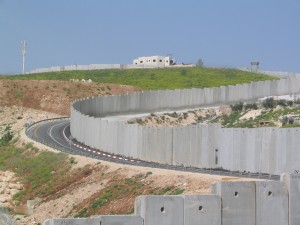May 25, 2011
When describing the current situation in oPt, distinction must be made between a protracted crisis within a protracted crisis in the West Bank and a systematic distraction of major livelihoods in Gaza due to the blockade. It is a crisis of protection, human rights and human dignity with humanitarian consequences.
Despite last year’s Israeli announcements of a relaxing of movement and access restrictions of Palestinians, goods and humanitarian staff to Gaza, and an easing of the ban on exports imposed in 2007, changes in the context are hardly positive. Instead, with the Karni crossing to Gaza definitively closed since early March 2011, isolation of the 1.5 million population from the outside world is further exacerbated. Most destruction and damages to housing and infrastructure caused by operation Cast Lead in December 2009 have still not been addressed due to lack of construction materials. The anti-terrorism legislation of a number of important donor governments and the limitations imposed by the Hamas leadership means that humanitarian workers face tremendous challenges in delivering aid on the basis of assessed needs without compromising basic humanitarian principles. The humanitarian space has become hostage to a process of criminalisation, and the premise of no harm is to be seriously doubted.
Disillusionment with peace process and two state solution
After an initial resumption in 2010, the peace process has again come to a standstill due to lack of trust in all parties to the conflict. Proposals for reconciliation talks between the two Palestinian factions are still under review. Hope for success in the Palestinian Authority’s state building agenda and the announcement of an independent state in September is steadily going down. “What state and on which basis”, is the question frequently asked. Most Palestinians wonder what this will mean for them as long as the two main factions are not reconciled and the conflict with Israel is not solved.
Attacks and retaliations continue particularly in the Gaza border areas between Hamas militant groups and Israeli forces. The no-go buffer zone on the Gaza side of the border with Israel covers around one third of Gaza’s agricultural land, largely contributing to unemployment, now at 45.5%, and decreased sources of income. There is a great feeling of frustration on all sides. Despite some economic improvement, the conflict affects the daily lives of the population in the West Bank including East Jerusalem. Residents are subject to daily humiliation and harassment as a result of the barrier, demolitions, confiscation of land for construction of new settlements and settler-related incidents.
Gender
It is against this background of continued conflict affecting men and women, boys and girls that the humanitarian community has intensified conscious efforts to ensure gender sensitivity in programmes. Initial findings show that such efforts have so far not been fully successful with regard to the involvement of women in project design and implementation, nor in gender-balanced project teams. In particular in Gaza the needs of women are high in protection and advocacy, while men are often not included in special initiatives for psycho-social counselling. Most donors like to see gender sensitivity built into the programmes they support, but this is not a requirement for all. It was noted that the CAP takes the gender issue seriously and the introduction of the gender marker has created slightly more awareness through training of all cluster partners on gender issues which need to be integrated from project formulation to monitoring and evaluation.
Needs assessments
In preparation of the CAP for 2011, joint needs assessments have been carried out by clusters. Individual agencies have assessed the needs in their areas to determine the best way to respond to priority needs. Donors from their side have made some progress in ensuring the programmes they fund have been subject to sound needs assessments and priority setting in order to avoid a purely humanitarian crisis. As the crisis in 2010 was not a sudden emergency, donors resumed their pre-Cast Lead pattern of funding with pledges early in the year but sometimes fund transfers delayed by administrative procedures. The timeliness of funding was not an issue but rather the imbalance in volume in response to the cluster needs as included in the CAP. At the end of the year, the CAP was funded for 52% with the biggest gaps in the education and agriculture sectors.
Accountability
One of the key principles of the Good Humanitarian Donorship initiative is the responsibility of donors to ensure the quality and effectiveness of their aid. This includes accountability to the target population of the aid initiatives as well as to their own constituencies. In oPt, the general impression is that donors like to see this included in the projects they fund but many do not insist nor verify whether this is done. In particular in a situation as politically charged as in the oPt, transparency about the motivation for providing financial support is critical.
The question remains whether lessons are learned from the various evaluations and can be of influence in ensuring humanitarian space is maintained and the population’s needs are covered without any discrimination and on the basis of vulnerability and needs.

Share this